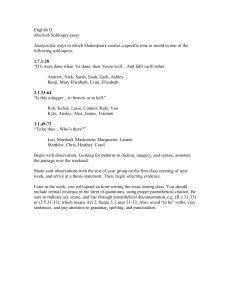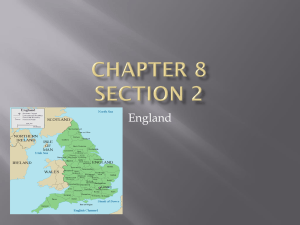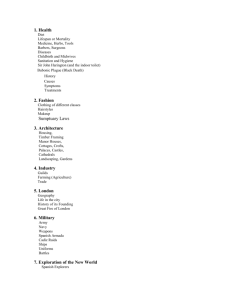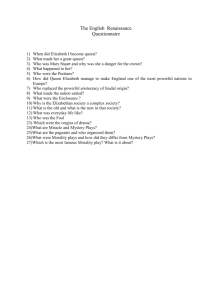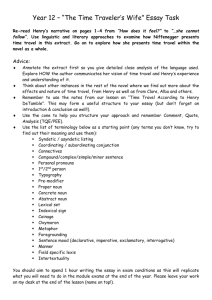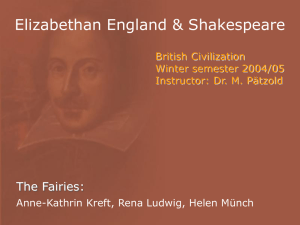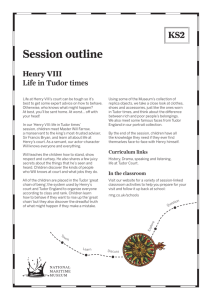mtstudy.doc
advertisement
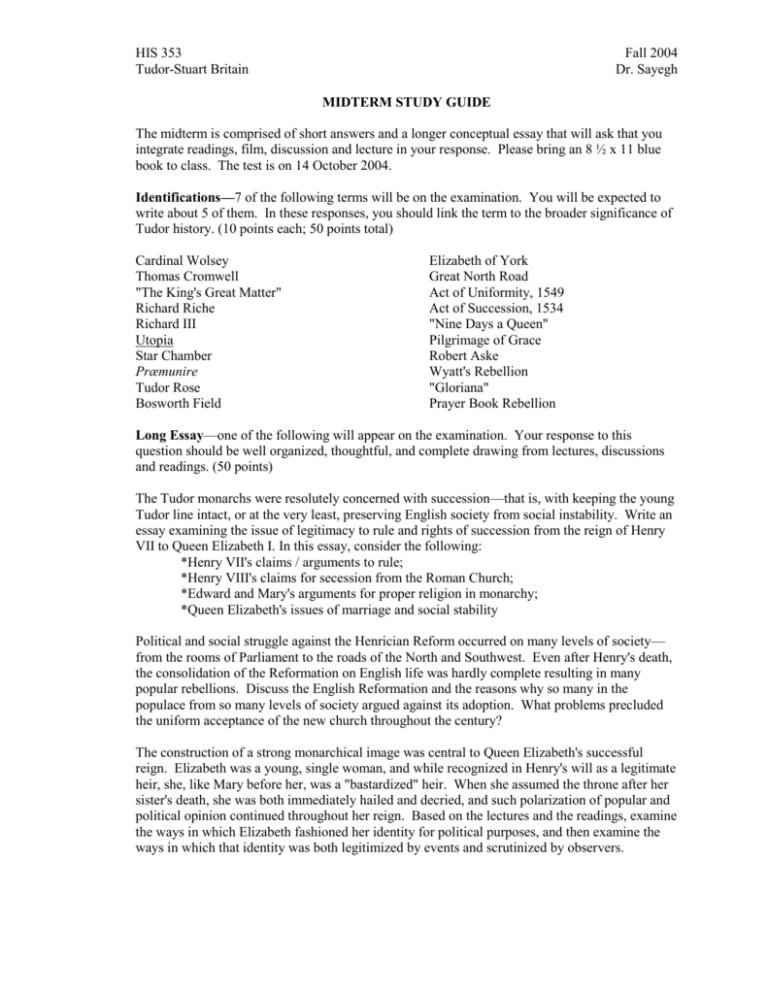
HIS 353 Tudor-Stuart Britain Fall 2004 Dr. Sayegh MIDTERM STUDY GUIDE The midterm is comprised of short answers and a longer conceptual essay that will ask that you integrate readings, film, discussion and lecture in your response. Please bring an 8 ½ x 11 blue book to class. The test is on 14 October 2004. Identifications—7 of the following terms will be on the examination. You will be expected to write about 5 of them. In these responses, you should link the term to the broader significance of Tudor history. (10 points each; 50 points total) Cardinal Wolsey Thomas Cromwell "The King's Great Matter" Richard Riche Richard III Utopia Star Chamber Præmunire Tudor Rose Bosworth Field Elizabeth of York Great North Road Act of Uniformity, 1549 Act of Succession, 1534 "Nine Days a Queen" Pilgrimage of Grace Robert Aske Wyatt's Rebellion "Gloriana" Prayer Book Rebellion Long Essay—one of the following will appear on the examination. Your response to this question should be well organized, thoughtful, and complete drawing from lectures, discussions and readings. (50 points) The Tudor monarchs were resolutely concerned with succession—that is, with keeping the young Tudor line intact, or at the very least, preserving English society from social instability. Write an essay examining the issue of legitimacy to rule and rights of succession from the reign of Henry VII to Queen Elizabeth I. In this essay, consider the following: *Henry VII's claims / arguments to rule; *Henry VIII's claims for secession from the Roman Church; *Edward and Mary's arguments for proper religion in monarchy; *Queen Elizabeth's issues of marriage and social stability Political and social struggle against the Henrician Reform occurred on many levels of society— from the rooms of Parliament to the roads of the North and Southwest. Even after Henry's death, the consolidation of the Reformation on English life was hardly complete resulting in many popular rebellions. Discuss the English Reformation and the reasons why so many in the populace from so many levels of society argued against its adoption. What problems precluded the uniform acceptance of the new church throughout the century? The construction of a strong monarchical image was central to Queen Elizabeth's successful reign. Elizabeth was a young, single woman, and while recognized in Henry's will as a legitimate heir, she, like Mary before her, was a "bastardized" heir. When she assumed the throne after her sister's death, she was both immediately hailed and decried, and such polarization of popular and political opinion continued throughout her reign. Based on the lectures and the readings, examine the ways in which Elizabeth fashioned her identity for political purposes, and then examine the ways in which that identity was both legitimized by events and scrutinized by observers.

